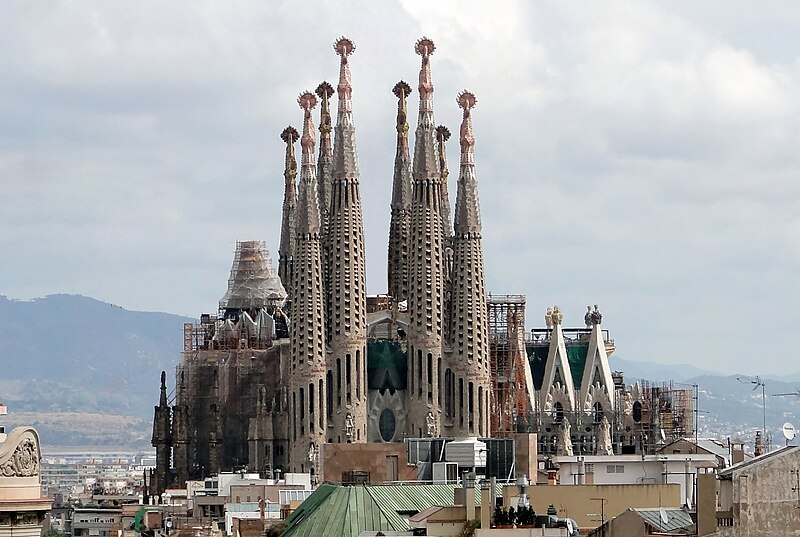Barcelona's Montjuïc
(Jew Mountain) is a broad shallow hill with a relatively flat top
overlooking the harbour, to the southwest of the city centre. The
eastern side of the hill is almost a sheer cliff, giving it a commanding
view over the city's harbour immediately below. The top of the hill (a
height of 184,8 m) was the site of several fortifications, the latest of
which (the Castle of Montjuïc) remains today.
The site was selected to host the 1929 International Exposition (a
World's Fair), for which the first large-scale construction on the hill
began. The surviving buildings from this effort include the grand Palau
Nacional, the Estadi Olímpic (the Olympic stadium), the ornate Font
Màgica fountains, and a grand staircase leading up from the foot of
Montjuïc at the south end of the Avinguda de la Reina Maria Cristina,
past the Font Màgica and through the Plaça del Marquès de Foronda and
the Plaça de les Cascades to the Palau Nacional. The Poble Espanyol, a
"Spanish village" of different buildings built in different styles of
Spanish architecture, also survives, located on the western side of the
hill. Mies van der Rohe's German national pavilion was constructed at
the foot of the hill, near the Plaça del Marquès de Foronda. It was
demolished in 1930 but was rebuilt in 1988.
The Montjuïc was selected as the site for several of the venues of
the 1992 Summer Olympics, centred around the Olympic stadium.
Offline version of this walk for your iPhone you can get via PinMyWAY app. FREE!





